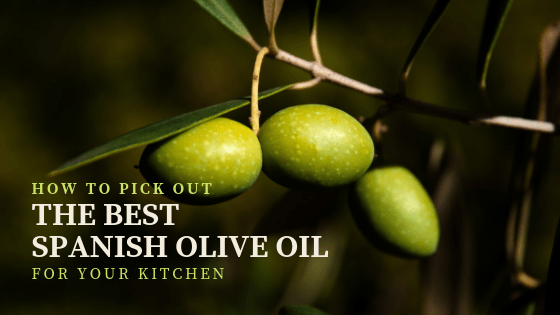HOW TO PICK OUT THE BEST SPANISH OLIVE OIL FOR YOUR KITCHEN

Some of the best olive oil in the world hails from Spain, as it is the base of Spanish cooking and the Mediterranean diet. Picking out a quality olive oil might seem like a daunting task when you’re facing hundreds of bottles at the supermarket, but it doesn’t have to be! Once you know a little bit about it and what your main purpose is, picking out the best Spanish olive oil for your needs will be a piece of cake!
What is the process for making Spanish olive oil?
Spain is the largest producer of olive oil in the world, beating out oil giants like Italy, Greece, and Turkey. Olive trees date back thousands of years in the Mediterranean, helping to develop Spanish cuisine and cooking techniques as we know them today. The first step in making olive oil is to harvest the olives from the trees. The younger the olive and shorter the harvest period, the stronger the taste will be. If the olives are left the ripen longer, you get a smoother, milder taste.
Next, the olives are crushed and pressed and the pits are separated. Depending on how many times the olives are pressed to separate any pieces or impurities, the cleaner the oil becomes and the quality increases. Lastly, the olive oil is left to age, up to 6 months, to improve and mellow out the flavor.
Grades of olive oil
There are several grades, or varieties, of Spanish olive oil that you can find at the supermarket. Virgin olive oils are oils that are made in conditions that do not alter the oil, meaning that it stays as pure as possible. After washing, the olives go through a few different processes that may be mechanical or manual, in order to clean them and turn them into oil. These are natural processes that don’t change or affect the quality of the oil. Virgin oils are not mixed with any other oils that do not have the same properties and characteristics. Here are some of the most common Spanish olive oils that you will find at the supermarket.
- Extra virgin olive oil is highly-recommended for its taste and purity. To be labeled as extra virgin, the International Olive Council states that it cannot have more than 0.8 grams of acidity per 100 grams.
- Virgin olive oil goes through the same preparation as extra virgin olive oil. However, virgin olive oil cannot contain more than 2 grams per 100 of acidity.
- Ordinary virgin oil and Lampante virgin (3.3g of acidity or less) are both virgin olive oils but not sold in supermarkets. These oils can be sold direct to consumers or by wholesale.
- Refined olive oil is refined virgin oil, so it doesn’t have the full taste or aroma of a higher-quality oil. Even though it is perfectly safe to eat, it isn’t largely marketed in Spain.
- Regular olive oil is a mix of refined and extra virgin oils. It cannot have more than 1g of acidity per 100g, and is easily accessible in shops and markets.
See more: A Recipe for Spanish Omelette That is as Good as Abuela’s
Culinary uses for olive oil
Now that you know about the common categories of Spanish olive oil, you can pick out the one that best suits your needs. Extra virgin olive oil is the best choice to dress a salad or other cold dishes. It has a strong flavor as long as it isn’t compromised by heat. In Spain, this would most likely be the oil that you would find drizzled over a cold tapa or salad dish. It’s the best Spanish olive oil for preparing traditional Mediterranean dishes that are sauteed or pan-seared, too.
Many Spanish dishes are fried, especially tapas like seafood, croquetas, and patatas bravas. You don’t want to use extra virgin oil for frying because it has a heavier taste and a lower smoke point. Instead, try refined olive oil, the most basic. It is lighter in taste and has a higher smoke point that better withstands heat.
Another thing to keep in mind is taste. Remember that a younger oil will have a stronger, more robust taste compared to an aged oil. Also, make sure to use the oil and not keep the bottle open for too long. Once opened, you want to use the olive oil within a few months. After that, the quality in taste diminishes.
Want to learn more about Spanish olive oil and Mediterranean cuisine? Join Food Lover Tour on a food tour! You’ll learn so much about Spanish cooking while sampling delicious food and amazing wine. It doesn’t get better than that!
